Over many years, Robert filled all of the offices at the local lodge as well as many at East Fife District Lodge level. In 1879 he was elected to lead the latter - a role he carried out by travelling around the district on his pony trap. Eventually, he served on several committees of the Grand Lodge, rising to its Assistant Grand Secretary. The "Good Templar Guide: North-East Fife District 1898-1904" stated that "the bicycle was neither fast nor fashionable in those days but with his pony, to and fro throughout the district he went, instituting new, resuscitating dormant, and encouraging existing lodges".
Above is a piece from the 24 November 1883 Fifeshire Advertiser describing the celebration following completion of building work on a new farm steading at Pratis led by Robert Gilchrist. In 1885, Gilchrist was convener of the committee responsible for the events associated with the Crusoe Statue unveiling. The following year, he completed the building of the Good Templar Hall (later known as the Crusoe Hall). Over the next three decades Robert continued in the building trade, still residing at Emsdorf House, playing a significant role in the development of Lundin Links, along with fellow builders such as Archibald White and Walter Horne. He was the builder of the Simpson Institute in Upper Largo, opened in 1891. His daughter Elspeth married painter Robert Blair Forrester in 1893. In 1894, Robert Gilchrist and Son were the builders of the striking Colinsburgh Town Hall.
In 1911, Robert and Jane Gilchrist celebrated their Golden Wedding. Two of their children and seven grandchildren were present. Their daughter Catherine had died in 1889 aged 27. The 15 March 1911 Leven Advertiser gives an account of the event below, along with further details of Robert's life. He was chair of the Parish Council, an elder of the Parish Church, President of Largo Curling Club and active in the bowling and tennis clubs. However, he was best known for his tireless work in connection with the temperance movement. Robert Gilchrist died, aged 85, at Emsdorf House in 1926. His wife Jane had predeceased him in 1913.
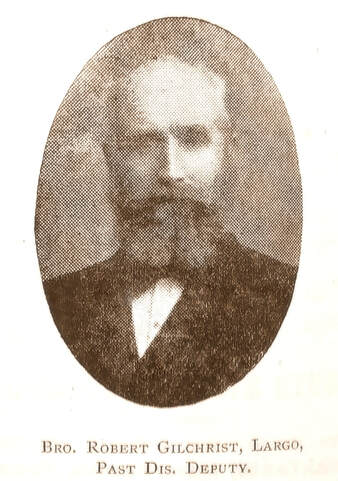
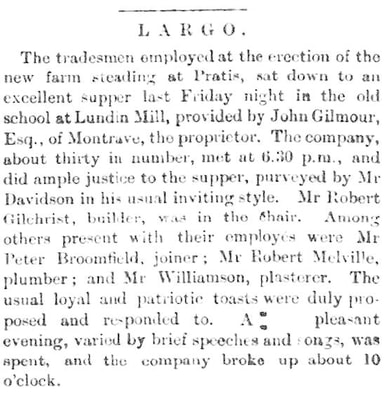


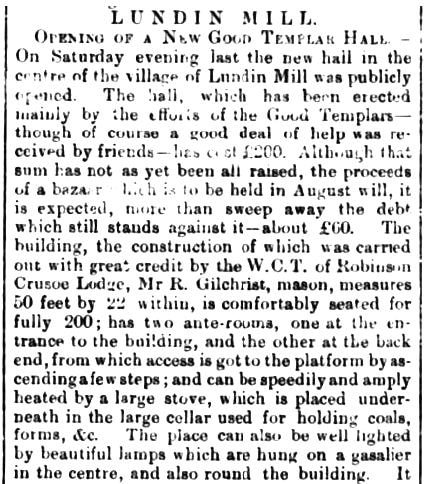
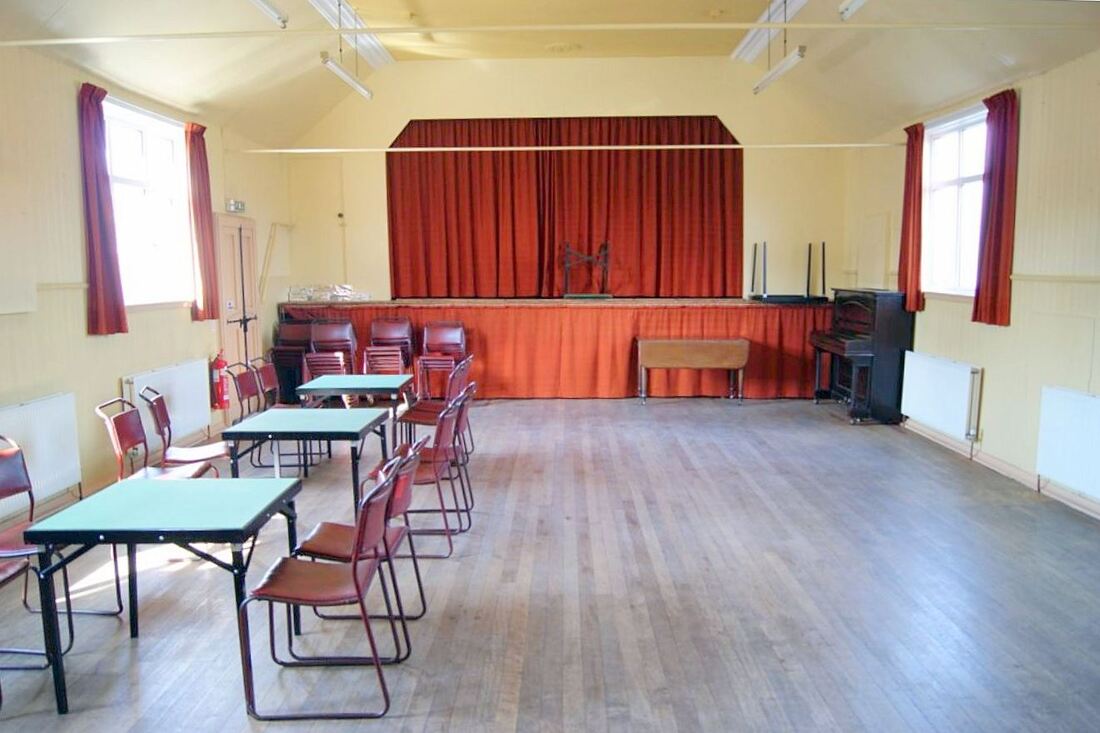
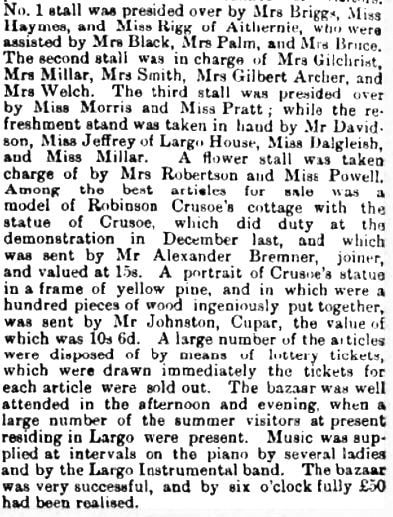

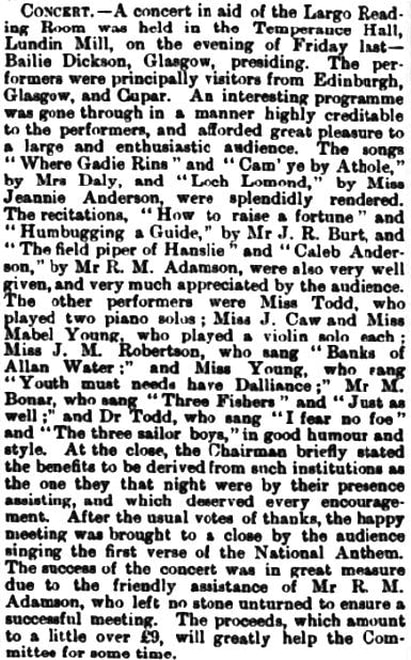
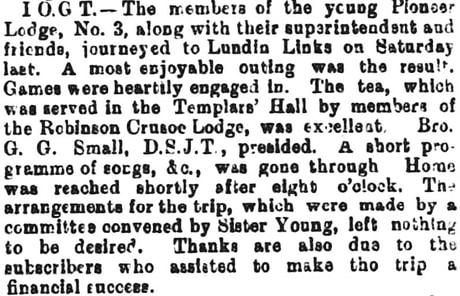
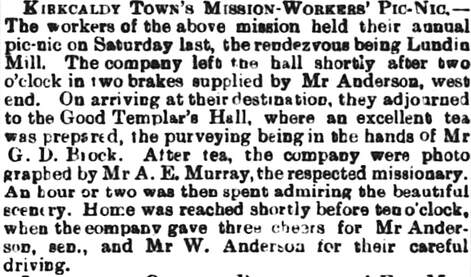

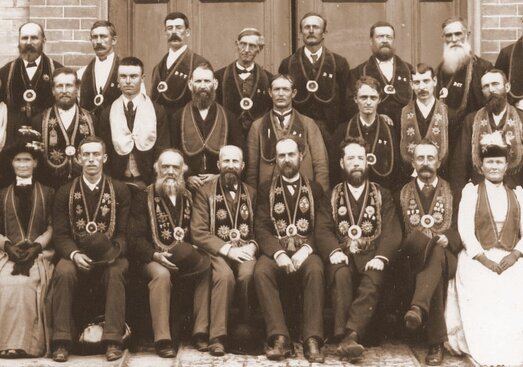
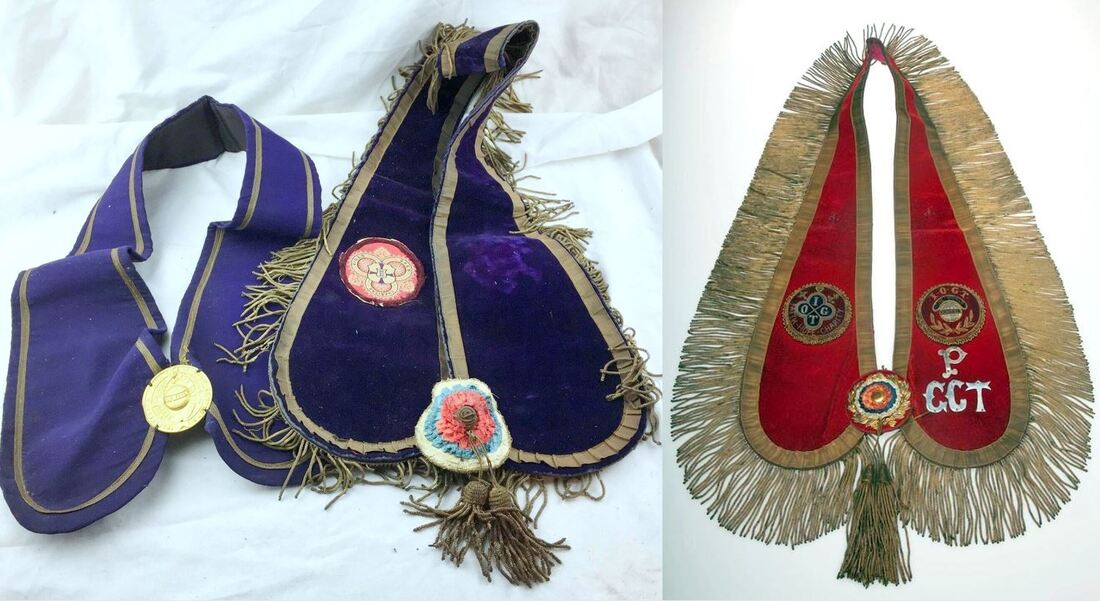
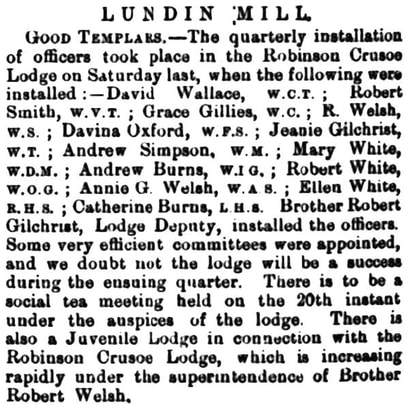
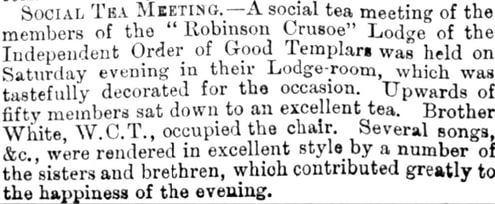
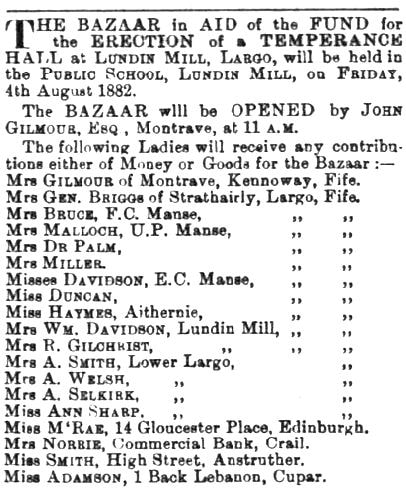
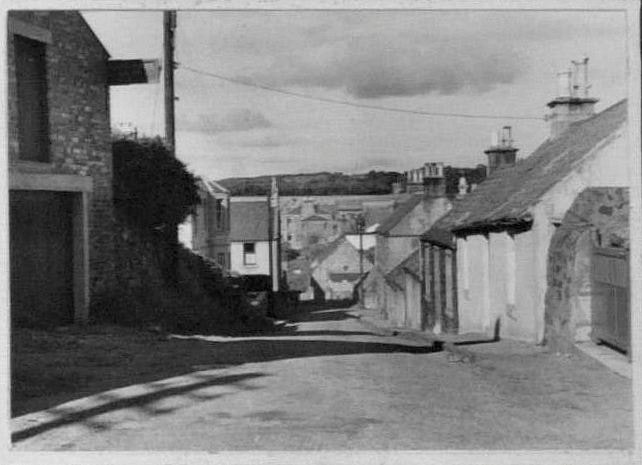
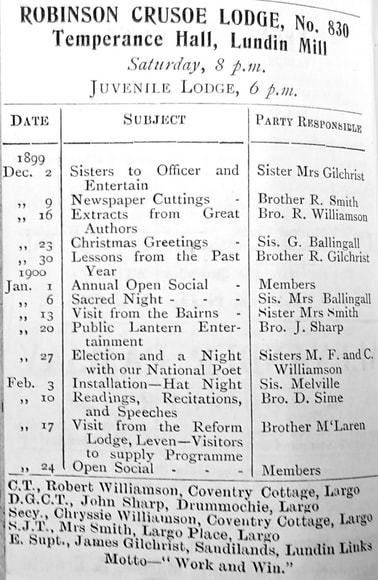
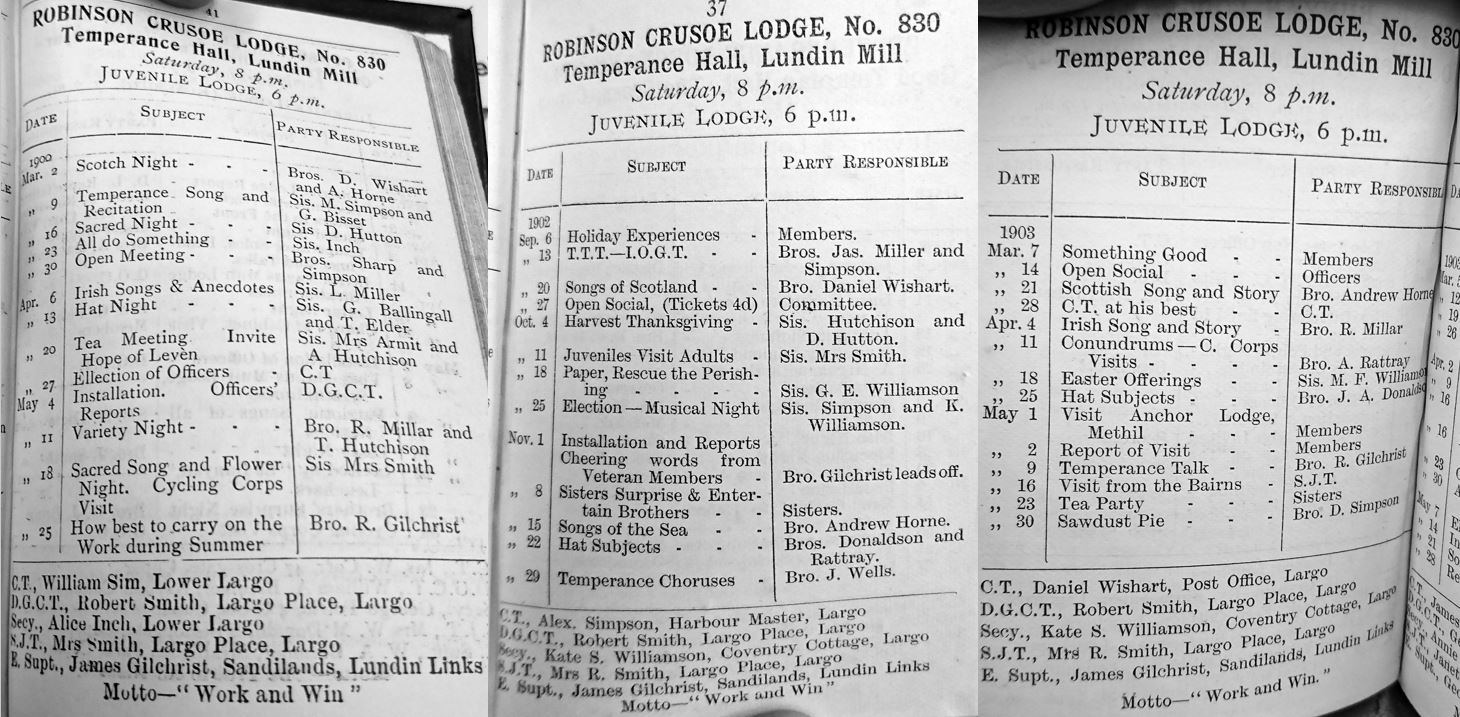

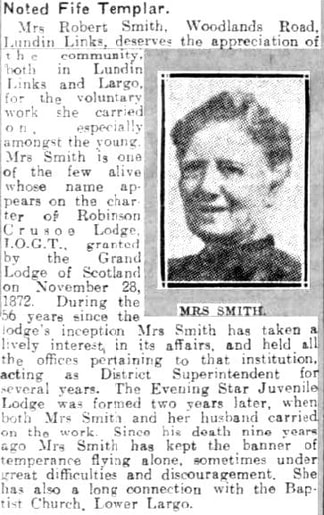
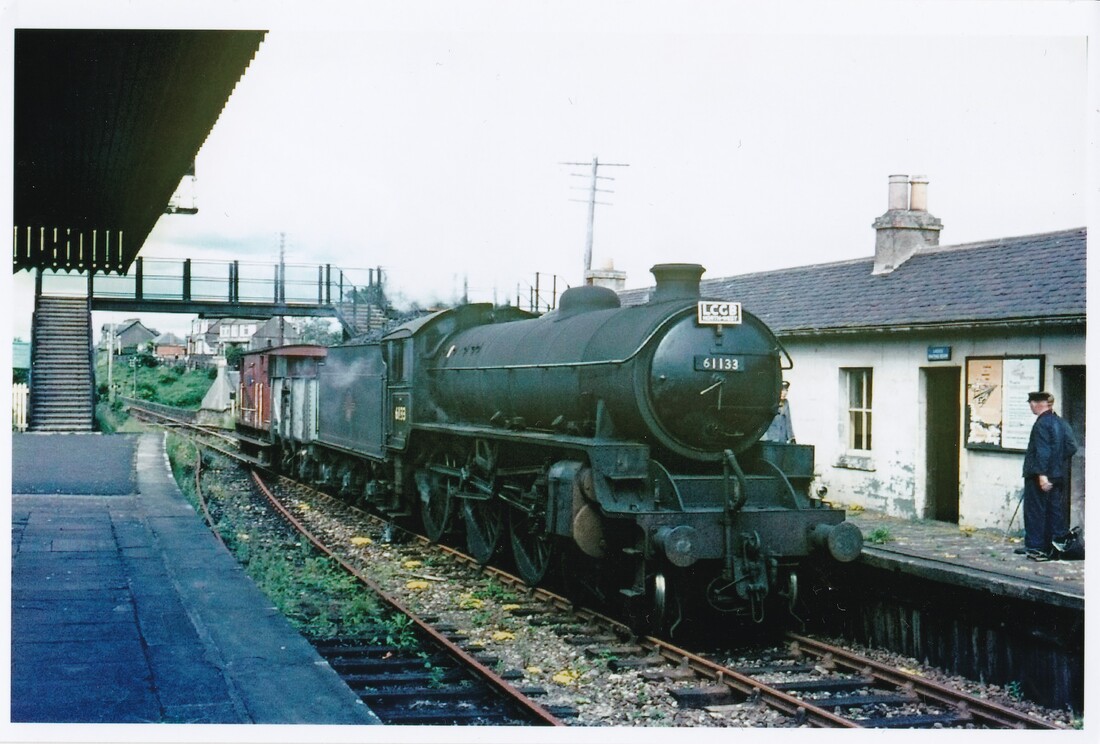
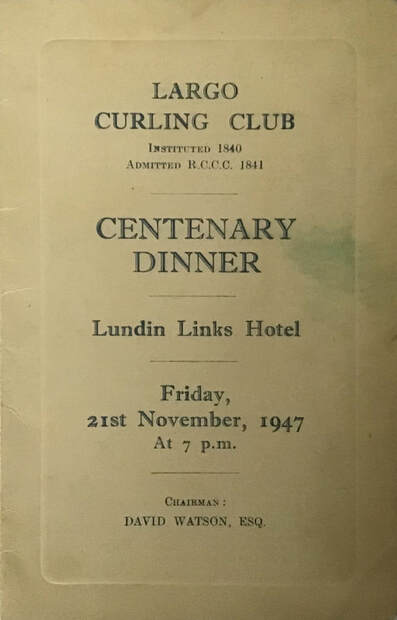
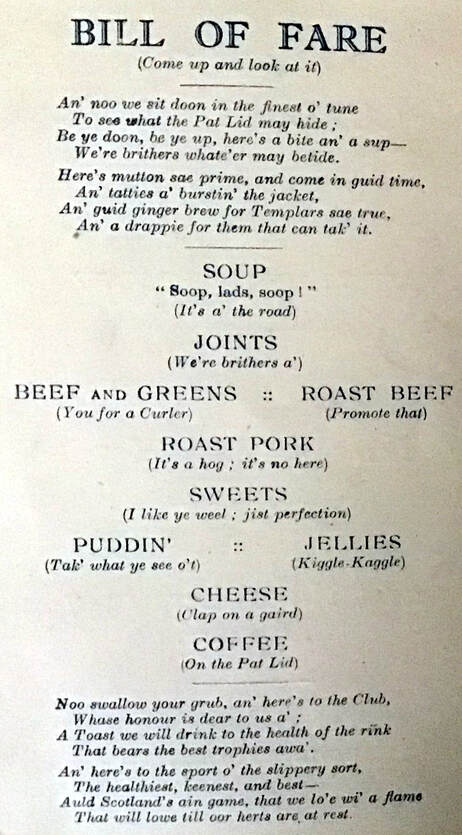
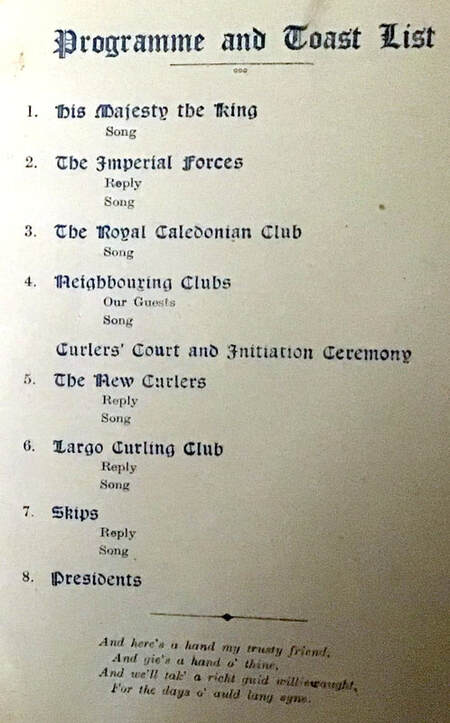
 RSS Feed
RSS Feed
